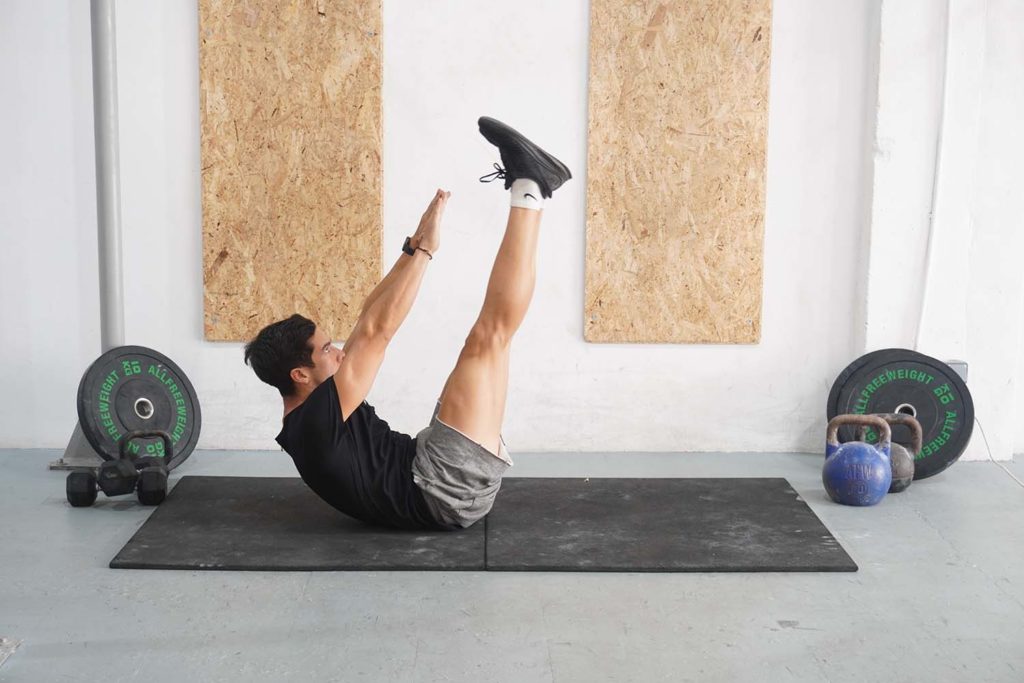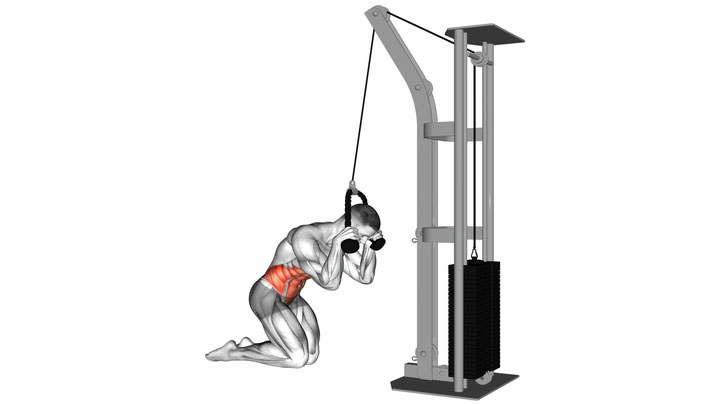The Benefits of the Oblique Crunch
Oblique crunches are a great exercise you can perform to strengthen your internal and external obliques. Unlike most core exercises, the objective here is to twist your torso to one side as you move up. Doing so allows you to maintain proper form, train your rectus abdominis, and put more emphasis on your obliques, the muscles covering both sides of the six-pack abs.
Crunches and other similar oblique exercises are beneficial for developing your core more effectively, improving your rotational strength, and reducing the risk of injuries. Having strong obliques is also helpful for your everyday life, as these muscles play a role in bending to the side, throwing, and maintaining good posture.
The beauty of crunches is their simplicity. You don’t need any equipment, and you don’t need to be advanced to start performing the exercise. We recommend introducing oblique crunches near the end of your exercise program, and doing as many slow and controlled repetitions as you can.
Level of exercise: Beginner
How to an Oblique Crunch
- Place an exercise or yoga mat on the floor and lie down with your knees bent and feet flat.
- Put your fingers at the back of your head for the starting position.
- Engage your abs and take a breath.
- Crunch and twist your torso to the left, bringing your right elbow to the left knee.
- Hold the top position for a moment and lower yourself to the floor as you exhale.
- Take another breath and crunch, twisting to the right this time, having your left elbow touch the right knee.
- Keep alternating between crunching to the left and right, taking a breath before each repetition, and tapping each knee as you twist.
Alternatively:
- Lie on the floor, have your knees bent, and have your feet flat on the floor for the starting position.
- Extend your left arm to the side and place your hand flat against the ground.
- Bend your right elbow and place the fingers of your hand behind your head.
- Take a breath and crunch, twisting to the left and bringing your right elbow to the left knee.
- Lower yourself as you exhale, take another breath, and crunch in the same direction.
- Once finished, bring the left arm to the side and put your right hand behind your head.
- Perform the same number of repetitions, touching your left elbow to the right knee.
What muscles does the oblique crunch activate?
The primary muscle that works during an oblique crunch is the rectus abdominis, which covers the stomach, spanning from just below the ribs to the hip bone (1). Its primary function is to bring the ribcage closer to the hips, which occurs as we crunch.
Our internal and external oblique muscles also work during an oblique crunch. These muscles are responsible for the twisting motion of the upper body during each repetition (2, 3). For example, as we crunch to the left, the right external oblique and left internal oblique work together. In contrast, as we crunch to the right, the left external and right internal obliques become more active.
The transverse abdominis also plays a role during crunches, and the muscle’s primary function is to offer torso stability (4).
Tips on Getting the Most from the Oblique Crunch
An essential tip for making the oblique crunch more effective is to keep your lower back in contact with the floor. Doing so allows you to engage your abs and initiate each repetition by crunching your torso. A simple cue to keep in mind for oblique crunches is to tense your core musculature as if you’re about to take a punch in the stomach.
Another tip for effective oblique crunches is to initiate the torso rotation from your midsection because that will make it possible to activate the correct muscles. Many trainees make the mistake of rotating their arms in one direction, thinking that it would lead to oblique development.
The third tip for effective oblique crunches is to perform repetitions slowly, feeling the correct muscles working from start to finish. Adding a slight pause at the top is a fantastic way to improve muscle activation and make each repetition more effective. Doing so is also an excellent way to prevent the use of momentum that can rob your muscles of the tension they need to grow and strengthen.
Variations and Modifications of the Oblique Crunch
1. Side-Lying Oblique Crunch
The side-lying oblique crunch is a variation you perform by lying on one side. Once in position, bring your top shoulder blade close to the floor and use that as your starting position. From there, take a breath and crunch diagonally, engaging your oblique.
2. Weighted Oblique Crunch
Weighted crunches are an excellent variation that makes the exercise more challenging. The primary difference is that you’re now holding a weight, be it a dumbbell or weight plate. Once in position, crunch and twist to one side.
3. Raised Legs Oblique Crunch
Similar to weighted oblique crunches, the raised legs variation is more advanced. The objective is to lie on your back, lift your legs in the air, bend your knees, and keep them over your hips. You then have to perform oblique crunches as you usually would.
Mistakes to Avoid
Doing Reps too Quickly
One of the most common mistakes with oblique crunches is performing repetitions too quickly and not paying any attention to proper muscle activation. Sure, doing so is great for completing more repetitions, but each one is less effective and defeats the purpose of the exercise. Maintain proper form by doing slow reps and feeling the correct muscles working from start to finish.
Arching Your Lower Back
Another mistake with oblique crunches is maintaining an arch in your lower back and bringing your shoulder blades back. Doing so prevents you from engaging your abs and obliques effectively and instead forces you to use your hip flexors. Fix the mistake by keeping your lower back in contact with the floor and maintaining that spinal position as you raise your torso off the ground.
Pulling Your Neck Forward
The third mistake to watch out for is pulling your neck forward as you crunch up. Yanking your neck won’t make the exercise more effective but will instead strain the area and increase the risk of aches. Avoid the mistake by keeping only your fingertips behind your head and consciously resisting the urge to pull your neck forward as you get tired and struggle to complete more reps.
Similar Exercises to the Oblique Crunch
V Up

V ups are a challenging and effective bodyweight exercise that strengthens your entire midsection. Lie on your back, extend your arms to the sides of your head, and straighten your legs. From there, take a breath, engage your abs and lift your torso and legs simultaneously.
Cable Crunch

Cable crunches are beginner-friendly and offer flexibility because you can adjust the resistance based on your current strength level. The objective is to set the load, attach a rope on a high pulley, grab it, lean forward, place the rope behind your neck, and get down on your knees. Once there, take a breath and use your abs to crunch against the line of resistance.

